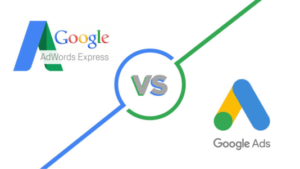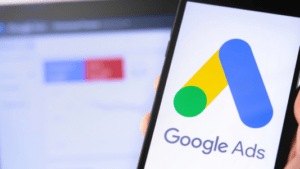In today’s digital age, advertising has become an essential component of any successful marketing strategy. With the rapid growth of online platforms, businesses have numerous options to reach their target audience. Two prominent advertising platforms that have revolutionized online marketing are Google Ads and Facebook Ads. Google Ads, the leading pay-per-click (PPC) platform, and Facebook Ads, a powerful social media advertising platform, offer distinct advantages and cater to different marketing objectives. In this article, we will delve into a detailed comparison of Google Ads and Facebook Ads, highlighting their features, benefits, and use cases to help you determine which platform is right for your business.
Table of contents:
I. Overview of Google Ads and Facebook Ads:
Google Ads:
- Definition and Purpose
- Ad Formats and Placement
- Targeting Options
- Key Benefits
Facebook Ads:
- Definition and Purpose
- Ad Formats and Placement
- Targeting Options
- Key Benefits
II. Comparison of Features:
Audience Reach:
- Size and Demographics
- User Intent
Ad Formats:
- Text Ads
- Display Ads
- Video Ads
- Responsive Ads
Targeting Capabilities:
- Demographic Targeting
- Interest-Based Targeting
- Behavioral Targeting
- Custom Audience Targeting
Cost and Budgeting:
- Pricing Models (CPC, CPM, CPA)
- Average Cost per Click/Impression
- Ad Spend Control
Conversion Tracking and Analytics:
- Tracking Pixel Integration
- Conversion Tracking
- Performance Metrics
III. Use Cases and Best Practices:
Google Ads Use Cases:
- Search Network Ads for High-Intent Queries
- Display Network Ads for Brand Awareness
- YouTube Ads for Video Marketing
- Remarketing to Re-engage Potential Customers
Facebook Ads Use Cases:
- Promoting Engaging Content with Boosted Posts
- Generating Leads with Lead Generation Ads
- Driving App Installs and Engagement
- Building Brand Awareness with Video Ads
IV. Case Studies and Examples:
Google Ads Case Studies:
- Case Study 1: Local Plumbing Service
- Case Study 2: E-commerce Store
- Case Study 3: SaaS Company
Facebook Ads Case Studies:
- Case Study 1: Fashion E-commerce Brand
- Case Study 2: Fitness Studio
- Case Study 3: Mobile Game App
V. Conclusion:
Google Ads vs. Facebook Ads: Which Is Right for You?
In today’s digital age, advertising has become an essential component of any successful marketing strategy. With the rapid growth of online platforms, businesses have numerous options to reach their target audience. Two prominent advertising platforms that have revolutionized online marketing are Google Ads and Facebook Ads. Google Ads, the leading pay-per-click (PPC) platform, and Facebook Ads, a powerful social media advertising platform, offer distinct advantages and cater to different marketing objectives. In this article, we will delve into a detailed comparison of Google Ads and Facebook Ads, highlighting their features, benefits, and use cases to help you determine which platform is right for your business.
I. Overview of Google Ads and Facebook Ads:
Google Ads:
Google Ads is a PPC platform developed by Google. It enables advertisers to create and display ads across Google’s search network, display network, and YouTube. Key features and benefits of Google Ads include:
Ad Formats and Placement: Google Ads offers various ad formats, including text ads, display ads, video ads, and responsive ads. These ads can appear in search engine results, on relevant websites within the Google Display Network, or on YouTube.
Targeting Options: Google Ads provides sophisticated targeting options, allowing advertisers to reach specific audiences based on keywords, demographics, locations, and more. Advertisers can also leverage remarketing to re-engage potential customers who have previously interacted with their website.
Key Benefits: Google Ads is known for its high intent targeting, as it allows businesses to capture users actively searching for products or services. It offers extensive reach, precise targeting options, and powerful analytics to measure campaign performance.
Facebook Ads:
Facebook Ads is an advertising platform offered by Facebook, the largest social media network. It allows businesses to create and promote ads across Facebook, Instagram, Messenger, and the Audience Network. Key features and benefits of Facebook Ads include:
Ad Formats and Placement: Facebook Ads offers a wide range of ad formats, including image ads, video ads, carousel ads, and more. These ads can be displayed within the Facebook news feed, Instagram feed, Stories, or in the right column of Facebook.
Targeting Options: Facebook Ads provides robust targeting capabilities based on user interests, demographics, behaviors, and connections. Advertisers can create custom audiences, lookalike audiences, and retargeting campaigns to reach their desired audience segments.
Key Benefits: Facebook Ads excels in its ability to precisely target specific audience segments based on their interests, demographics, and behaviors. It offers extensive reach across multiple platforms and provides powerful engagement metrics to measure campaign performance.
II. Comparison of Features:
Audience Reach:
Size and Demographics:
Google Ads: Google has a massive user base, with billions of searches conducted daily. It covers a wide range of demographics, making it suitable for reaching a diverse audience.
Facebook Ads: Facebook boasts over 2.8 billion monthly active users, making it a platform with extensive global reach. It allows advertisers to target specific demographics, interests, and behaviors, making it ideal for reaching niche audiences.
User Intent:
Google Ads: Users on Google have high intent as they actively search for specific products or services. This makes Google Ads effective for capturing users at the point of purchase consideration.
Facebook Ads: Users on Facebook are typically in a more passive state, scrolling through their feed or engaging with content. Facebook Ads are effective for building brand awareness, generating leads, and nurturing relationships with potential customers.
Ad Formats:
Text Ads:
Google Ads: Google Ads allows for the creation of text-based ads with headlines, descriptions, and clickable links. These ads appear in search engine results and can be highly targeted based on specific keywords.
Facebook Ads: Facebook Ads support text-based ads, but they are typically more visually focused with a mix of text and images or videos. These ads are designed to blend seamlessly into the Facebook and Instagram feeds.
Display Ads:
Google Ads: Google’s Display Network allows advertisers to display image or banner ads on millions of websites within the network. These ads can include graphics, animations, and interactive elements to capture users’ attention.
Facebook Ads: Facebook offers a variety of display ad formats, including image ads, carousel ads, and collection ads. These visually engaging ads can showcase products, stories, or a sequence of images to tell a brand’s story.
Video Ads:
Google Ads: Google Ads provides options for running video ads on YouTube, the second-largest search engine globally. Video ads can be shown before, during, or after YouTube videos or within the YouTube search results.
Facebook Ads: Facebook Ads support video ads that can be displayed within the Facebook news feed, Instagram feed, or Stories. Video ads can be an effective way to grab users’ attention and convey brand messages.
Responsive Ads:
Google Ads: Responsive ads automatically adjust their size, format, and appearance to fit various ad spaces on the Google Display Network. Advertisers provide multiple headlines, descriptions, and images, and Google’s system dynamically creates the most effective combination.
Facebook Ads: While Facebook doesn’t have a direct equivalent to responsive ads, advertisers can create variations of their ads to test different visuals, copy, and calls to action to optimize performance.
Targeting Capabilities:
Demographic Targeting:
Google Ads: Google Ads allows targeting based on demographics such as age, gender, and parental status. These options help advertisers refine their audience based on specific characteristics.
Facebook Ads: Facebook Ads offers robust demographic targeting, including age, gender, location, education, relationship status, and more. Advertisers can narrow down their audience to reach highly specific segments.
Interest-Based Targeting:
Google Ads: Google Ads primarily relies on keyword targeting and user search intent rather than explicit interest-based targeting. However, advertisers can leverage Google’s affinity audiences and in-market audiences to reach users with relevant interests.
Facebook Ads: Facebook Ads is renowned for its interest-based targeting. Advertisers can target users based on their likes, interests, and activities on Facebook, allowing for precise audience segmentation.
Behavioral Targeting:
Google Ads: Google Ads provides behavioral targeting options based on user search history, websites visited, and interactions with previous ads. Advertisers can tailor their campaigns to reach users who have exhibited specific behaviors relevant to their business.
Facebook Ads: Facebook Ads offers behavioral targeting based on user activities, such as purchases made, app usage, and device usage. This enables advertisers to target users with specific behaviors relevant to their marketing objectives.
Custom Audience Targeting:
Google Ads: Google Ads allows advertisers to create custom audiences based on website visitors using Google Analytics data or customer data uploaded to Google Ads. This enables remarketing and targeting specific segments of users.
Facebook Ads: Facebook Ads excels in custom audience targeting. Advertisers can upload customer lists, create lookalike audiences based on existing customers, and retarget users who have interacted with their website or app.
Cost and Budgeting:
Pricing Models (CPC, CPM, CPA):
Google Ads: Google Ads operates on a cost-per-click (CPC) model, where advertisers only pay when users click on their ads. It also supports cost-per-impression (CPM) and cost-per-acquisition (CPA) bidding strategies depending on campaign goals.
Facebook Ads: Facebook Ads uses a variety of pricing models, including CPC, CPM, and CPA. Advertisers can choose the most suitable bidding strategy based on their campaign objectives and budget.
Average Cost per Click/Impression:
Google Ads: The average cost per click (CPC) in Google Ads varies significantly based on factors such as industry, competition, and keyword relevance. Highly competitive industries tend to have higher CPCs.
Facebook Ads: Facebook Ads generally has lower average CPCs compared to Google Ads, but the costs can vary depending on factors like audience targeting, ad quality, and competition within the platform.
Ad Spend Control:
Google Ads: Google Ads provides various tools to control ad spend, including daily budget limits, bid adjustments, and ad scheduling. Advertisers can set a maximum budget to ensure they don’t exceed their desired spend.
Facebook Ads: Facebook Ads offers budget controls, allowing advertisers to set daily or lifetime budgets for their campaigns. Additionally, advertisers can set bid caps and optimize their ads to maximize results within their allocated budget.
Conversion Tracking and Analytics:
Tracking Pixel Integration:
Google Ads: Google Ads provides a tracking pixel called Google Ads Conversion Tracking, which allows advertisers to measure the effectiveness of their campaigns, track conversions, and attribute them to specific keywords or ads.
Facebook Ads: Facebook Ads uses the Facebook Pixel, a tracking code that advertisers can add to their website to track conversions, optimize ad delivery, and build custom audiences for retargeting.
Conversion Tracking:
Google Ads: Google Ads offers robust conversion tracking capabilities, enabling advertisers to track various actions, such as website purchases, form submissions, newsletter sign-ups, or phone calls generated from ads.
Facebook Ads: Facebook Ads provides conversion tracking tools that allow advertisers to track actions taken by users who have interacted with their ads, such as purchases, registrations, or app installs.
Performance Metrics:
Google Ads: Google Ads offers comprehensive performance metrics, including impressions, clicks, click-through rate (CTR), conversion rate, cost per conversion, and return on ad spend (ROAS). Advertisers can monitor and optimize campaigns based on these key metrics.
Facebook Ads: Facebook Ads provides detailed metrics such as reach, impressions, engagement rate, click-through rate, conversions, and cost per conversion. Advertisers can analyze these metrics to evaluate campaign performance and make data-driven decisions.
III. Use Cases and Best Practices:
Google Ads Use Cases:
Search Network Ads for High-Intent Queries:
Example: A plumbing service targeting users searching for “emergency plumber near me” can use Google Ads to display their ads at the top of search results, capturing users actively seeking immediate assistance.
Display Network Ads for Brand Awareness:
Example: An e-commerce store launching a new product line can use Google’s Display Network to showcase visually appealing ads on relevant websites, increasing brand exposure and attracting new customers.
YouTube Ads for Video Marketing:
Example: A SaaS company offering project management software can run YouTube ads to demonstrate the product’s features, benefits, and customer testimonials, effectively engaging their target audience.
Remarketing to Re-engage Potential Customers:
Example: An online retailer can use Google Ads remarketing campaigns to show tailored ads to users who have previously visited their website, reminding them of the products they viewed and encouraging them to make a purchase.
Facebook Ads Use Cases:
Promoting Engaging Content with Boosted Posts:
Example: A fashion e-commerce brand can boost a social media post showcasing a new collection, increasing its reach and engagement among its followers and their friends.
Generating Leads with Lead Generation Ads:
Example: A fitness studio can use Facebook’s lead generation ads to capture user information, offering a free trial or discount in exchange for email addresses and contact details to follow up with potential customers.
Driving App Installs and Engagement:
Example: A mobile game app developer can run Facebook Ads campaigns to target users who have shown interest in similar games, driving app installs and encouraging engagement with in-app purchases.
Building Brand Awareness with Video Ads:
Example: A clothing brand can create compelling video ads showcasing its latest fashion trends, targeting users based on their interests and demographics to build brand awareness and increase brand recall.
IV. Case Studies and Examples:
Google Ads Case Studies:
Case Study 1: Local Plumbing Service
Objective: Increase phone inquiries and appointments for emergency plumbing services.
Strategy: Utilized Google Ads’ search network targeting users searching for “emergency plumber near me” and implemented call extensions.
Results: Increased phone inquiries by 40% and doubled appointment bookings within three months.
Case Study 2: E-commerce Store
Objective: Boost online sales for a new product line.
Strategy: Utilized Google’s Display Network to showcase visually appealing ads on relevant fashion websites, targeting users interested in similar products.
Results: Achieved a 30% increase in online sales and improved brand recognition among the target audience.
Case Study 3: SaaS Company
Objective: Increase sign-ups for a project management software.
Strategy: Ran YouTube ads showcasing the software’s features and benefits, targeting professionals interested in productivity tools.
Results: Achieved a 50% increase in free trial sign-ups and a significant boost in software adoption.
Facebook Ads Case Studies:
Case Study 1: Fashion E-commerce Brand
Objective: Drive website traffic and increase conversions for a seasonal sale.
Strategy: Created visually appealing image and carousel ads targeting fashion enthusiasts based on their interests and demographics.
Results: Increased website traffic by 60% and achieved a 20% uplift in conversions during the sale period.
Case Study 2: Fitness Studio
Objective: Generate leads for a new fitness class.
Strategy: Implemented lead generation ads offering a free trial class, targeting local users interested in fitness and healthy lifestyle activities.
Results: Generated over 200 leads within a month, resulting in a 30% conversion rate and a boost in new memberships.
Case Study 3: Mobile Game App
Objective: Increase app installs and engagement for a new mobile game.
Strategy: Ran video ads showcasing gameplay and targeting users who have shown interest in similar games.
Results: Achieved a 50% increase in app installs and a 20% improvement in in-app purchases.
V. Conclusion:
In conclusion, both Google Ads and Facebook Ads offer unique advantages and cater to different marketing objectives. Google Ads excels in capturing high-intent users actively searching for products or services, while Facebook Ads offers precise targeting based on user interests and demographics. To determine which platform is right for your business, consider your target audience, marketing goals, and budget. It’s also recommended to test both platforms with smaller campaigns to assess their effectiveness for your specific business. By leveraging the strengths of each platform, you can maximize your advertising efforts and achieve optimal results in the digital landscape.



